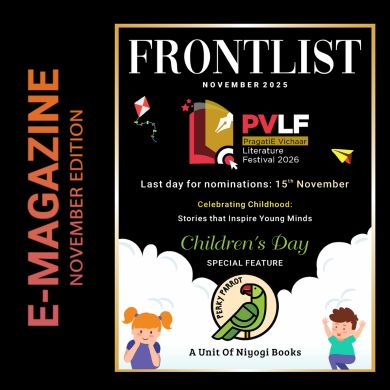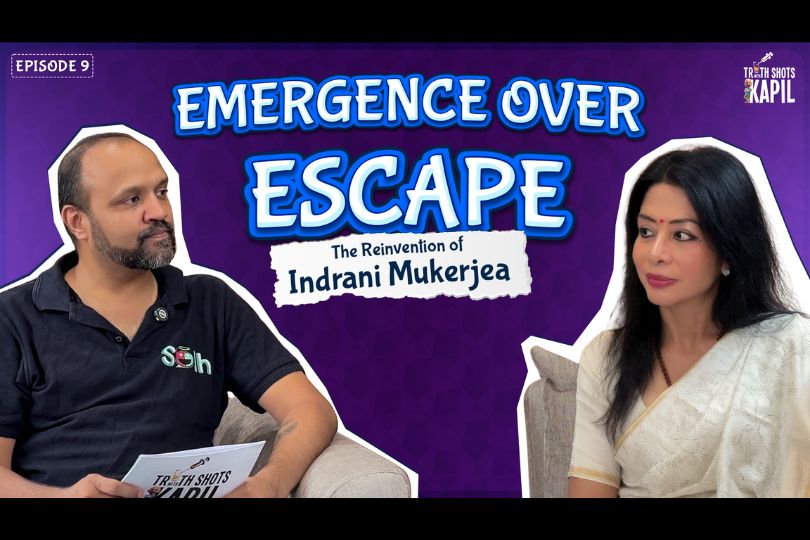Interview with Arthy Muthanna Singh and Mamta Nainy, Author of "Born to Bat : A Story Inspired by Mithali Raj"
Discover 'Little Leaders,' a series highlighting diverse figures who overcame challenges. Through vibrant illustrations and inspiring stories, young readers find courage and authenticity.on Jul 22, 2024

Frontlist: "Little Leaders" features stories of remarkable individuals who have overcome significant obstacles. What inspired you to create this series, and how do you choose the subjects for your books?
Arthy and Mamta: Leadership can take many forms and often arises from unexpected circumstances. In this series, we aim to explore the various forms of leadership and its multiple meanings by featuring stories of people who have risen above the odds, spoken out, taken a stand, and channelled fear and insecurity into action to make a change in their own big or small ways. Selecting these four leaders was a very exploratory process for us. Since these are the first four books in the series—and we hope there will be more!—we wanted to start with people from diverse fields and backgrounds whose names young readers are more likely to recognize. Our goal is to show young readers that these leaders were once kids just like them, with dreams and fears, but they chose to find strength and move forward to achieve their goals. While the first four books feature fairly well-known individuals, we definitely hope to eventually highlight the stories of lesser-known but equally strong individuals as well.
Frontlist: Your books blend factual storytelling with vibrant illustrations. How do you collaborate with illustrators to ensure that the visual elements enhance the narrative and engage young readers?
Arthy and Mamta: The visual language of a book is the first thing that readers, especially young ones, engage with. For each book in the series, we wanted the illustrations to achieve two main goals: to make the book visually delightful and to capture an element of each person’s personality within the visual narrative. For instance, in the book on Sunita Williams, we chose a dreamy and dramatic style to reflect the space she explores. In the book on Malala, we opted for a graphic, bold, and feisty style. For Mithali, we used a combination of color and black-and-white in a non-constricting way, and for Stephen Hawking, we selected a vibrant and deeply alive style to capture the unique tapestry of his trepidations and ambitions. We are very fortunate to have found four wonderful illustrators who brought these stories to life with their brilliant illustrations!
Frontlist: Stephen Hawking and Sunita Williams are iconic figures in science and space exploration. What aspects of their journeys do you think are most important for children to understand and learn from?
Arthy and Mamta: Often, we tend to pedestalize our role models, turning them into almost demigod-like figures. From the outset, we were determined that these stories would focus not just on what these leaders have achieved but also on the doubts, fears, and insecurities they faced along the way. The key message we wanted to convey is that despite their challenges, they didn’t let these obstacles stop them. We aimed to present their stories in a way that young readers could relate to, making them feel that they, too, could overcome their own fears and achieve great things.
Frontlist: Reading is often seen as a therapeutic activity. How do you think reading stories of perseverance and success can impact the mental health of children, especially in their formative years?
Arthy and Mamta: I believe stories have a profound impact on our identities, especially for young readers. With this series, we aimed to explore diverse ways of being and becoming—not only through the individuals whose stories we tell but also in the way we tell them. Beyond the biographical details, the larger idea was to highlight the early childhoods of these little leaders and emphasize aspects of their lives before they became well-known figures. This approach encourages authenticity and helps young readers embrace individualistic expressions in whatever they do.
In our interactions with children, it is immensely heartening to see them respond to and grasp the significance of how creative success is not about conforming to common standards of excellence but about finding one’s unique element. We’ve witnessed that these books spark a creative response in children and inspire them to create. This not only boosts their self-esteem and resilience but also fosters a sense of empowerment and individuality during their formative years.
Frontlist: Your books tackle themes of curiosity, resilience, and overcoming adversity. How do these themes support children's emotional and psychological development?
Arthy and Mamta: Nurturing creative purpose in children fosters individuality and a strong sense of self, which is crucial for their emotional well-being. This personal growth enriches their relationships with others. When children understand and accept themselves, they become more open to others, which cultivates empathy. With empathy comes self-awareness, and self-aware individuals create inclusive and supportive environments where everyone feels valued and respected. Additionally, this empowerment helps children navigate the complexities of life with confidence and authenticity. By emphasizing curiosity, resilience, and overcoming adversity, our books aim to support children's emotional and psychological development, helping them grow into empathetic, self-aware, and confident individuals.
Frontlist: In today’s digital age, where screen time is prevalent, how can parents and teachers encourage children to cultivate a love for reading? What role do you see your books playing in this context?
Arthy and Mamta: We live in an attention economy. In an era dominated by smartphones, tablets, and countless electronic gadgets, it can be challenging to draw children’s attention to books. However, there are several strategies that we can employ to cultivate a love for reading.
Firstly, creating a reading-friendly environment is essential. This includes having a variety of books available at home and in the classroom, setting aside dedicated reading times, and modelling reading behaviour. When children see adults in their lives valuing and enjoying reading, they are more likely to develop a similar attitude. Secondly, making reading a shared activity can be very effective. Parents and teachers can read aloud to children, discuss stories, and encourage children to share their thoughts about the books they read. This not only makes reading a social and interactive activity but also helps children develop critical thinking and comprehension skills. Incorporating books that align with children’s interests is another crucial strategy. Books that reflect their interests, curiosities, and the world around them can make reading more relatable and enjoyable. Providing access to diverse genres and subjects helps cater to different tastes and keeps the reading experience exciting.
In this context, our books play a significant role by offering engaging, inspiring, and relatable content. By presenting stories of perseverance, curiosity, and resilience, our books aim to inspire children to explore their own interests and dreams. They show that ordinary people can achieve extraordinary things, which can motivate children to pursue their passions.
Frontlist: Your books highlight how ordinary people can achieve extraordinary things. How can children apply the lessons from these stories to their own lives and ambitions, both academically and personally?
Arthy and Mamta: Every child comes into this world with a unique set of attributes, interests, and predispositions. This has long fuelled the nature versus nurture debate—whether talent is inborn or developed over time. We believe a significant part of talent is nurtured through exploration and development. Allowing children to try new things, take healthy risks, make age-appropriate choices, and solve problems is crucial for their growth.
Often, we mistake talent for excelling in something or being the best at it, which leads to only a select few in any classroom being considered talented. However, true talent lies in finding one's own element and authentic self while engaging in an activity. It shouldn't be about constantly questioning if you are good enough but rather asking if you enjoy what you are doing and if it brings you joy instead of depleting you. When a child finds their creative purpose and lives it fully and freely, it sets them up for success as a human being.
By learning from the stories of ordinary people achieving extraordinary things, children can understand that perseverance, curiosity, and resilience are key to their own academic and personal ambitions. They can see that success is not just about natural talent but also about dedication, passion, and the willingness to explore and grow.
Frontlist: How do you envision the long-term impact of your books on children's perspectives and aspirations, especially as they grow older and face their own challenges?
Arthy and Mamta: We hope that these stories empower young readers by helping them find the courage to be their most authentic selves.



.jpg)






.jpg)

.jpg)
.jpg)
.jpg)
.jpg)
.jpg)
.jpg)

.jpg)










Sorry! No comment found for this post.